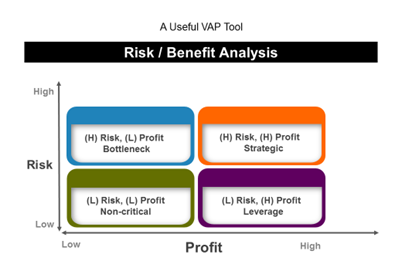
From buying to purchasing to supply management, using the correct terminology elevates your skills and experience, explains Pat Woods
It’s More Than Just Coffee!
As the awesome administrative professional that you are, I know that you are asking yourself the question: What does coffee have to do with purchasing? To align with the theme of this article, I’ll use a couple of different examples related to coffee.
Have you ever heard of Howard Schultz? Hint: he has something to do with coffee. Back in the late 1970s, Mr. Schultz was working for a well-established coffee retailer based on the U.S. West Coast. During this time, he made a trip to Milan, Italy and experienced more than just the java. He had an idea to model the Italian concept with his employer whereby they would serve espressos, cappuccinos, lattes, etc. In effect, they would no longer be just “coffee.”
Unfortunately, his superiors would not listen to him, and as a result, he left and bought a very small coffee retailer in Pike Place Market in Seattle, USA – and thus, Starbucks was born! The rest is history. You could say that Mr. Schultz changed the beverage business from tactical coffee to strategic espresso-based drinks. In fact, if/when you visit your local Starbucks, you will be waited on not by servers, but by baristas. In the same vein, if you enter a Walmart, you will be greeted not by employees, but by associates.
Some companies have taken this strategic name changing a bit too far. I passed a sandwich shop when I was in Washington D.C. last week and it indicated that their staff are known as sandwich artists. I knew one person who referred to himself as the Director of Floor Science, a fancy name for what used to be called a janitor. Why do I tell you this? Because just as beverages, food and yes, even cleaning floors have undergone name changes which denote a move from tactical to strategic (and in most cases, the excuse to raise prices!), the same can be said for purchasing.
Moving from Tactical to Strategic
“Purchasing” or “buying” has undergone a name change which reflects its move from tactical to strategic. It is now known as supply management. Look at the definition below promoted by the Institute of Supply Management (ISM):
“A supply management professional is an individual who provides leadership by aligning resources to define and satisfy diverse internal and external customer needs through acquisition and ongoing management of materials and services.”
In working with many fine administrative professionals over the years, including participants I have met as a Course Director for the Advanced Certificate for the Executive Assistant (ACEA®) program, purchasing (buying) is definitely part of their, and your, job responsibilities. But as one of my colleagues said years ago:
“Anyone can do buying. Even my grandmother buys groceries on a Saturday afternoon,”
Have you thought about it considering the key words in the definition above? Notice the action words that take you beyond simply buying/purchasing into managing supply:
- Leadership
- Alignment
- Satisfy
- Acquisition
- Management
And, like moving from “coffee” to “latte” or “employee” to “associate,” consider changing your vocabulary to refer to your outside providers as suppliers as opposed to vendors. When I think of a vendor, I imagine a hotdog and soda stand at a sporting event. A supplier is one who provides you with valued services, such as event venues or products, like computers or office supplies.
I will now address three key areas that reflect this move from tactical (simply placing orders) to strategic (driving real value for your organization). These areas are the focus of a masterclass that I teach to professionals all over the world on behalf of Missouri State University (USA) called “VAPNS – Value Added Procurement, Negotiations and Supplier Relationship Management.”
But before you read the below, it would help for you to make a list of all the services and/or the products that, as an Assistant, you have purchased for your company or will purchase in the future. Remember, these will now be provided to you by suppliers, not simply vendors. Then, as we review the three areas, see how you can apply these best-in-class concepts to lead, align, satisfy, acquire and manage the entire process.
1. Value Added Procurement (VAP)
The first action word listed as part of the supply management definition is leadership. A leader is not the same as a manager. Managers are designated, but leadership is earned through the influence and respect that you display and receive from others around you. A couple of additional related factors are synergy and corporate processes. Synergy is the premise that the whole is greater than the sum of the parts. This is advocating that as you engage in VAP initiatives, you form a cross-functional team. Think of the word TEAM as an acronym – Together Everyone Accomplishes More!
Corporate processes follow the admonition that if your organization is headed to London, you, as the administrative professional, and in your work with suppliers, must not be headed to Paris. So, for example, if your firm is in a big push to reduce costs (London), you do not want to be engaging in excess cost procurements (Paris). To help you focus on the right city, illustrated below is a common tool to allow you to select what is called your supply strategy. This is a tool that is advocated by major consulting firms with Fortune 100/500 clients, and I provide this to you at no additional charge! – LOL.

So, if you take each procurement that you are responsible for and first determine where the supplier fits, this will be the first step in developing your supply strategy. Look at the vertical axis (line); if your supplier is the only one you can buy from (based on the specification or location), this is known as a Sole Source, which is at the top of the line as High Risk. The bottom of the line is Low Risk, in which there exist a lot of sources, and the middle would be limited sources. Next is the horizontal axis (line) where High Profit would denote an expensive (A type) purchase. The opposite would be C, and in the middle is B (the Pareto Principle).
The takeaway is that in the top right box, you would want to strive for a partnership, whilst for the top left box you would look for alternatives or a substitute. In the bottom right box you would request competitive quotes, and in the bottom left box you would look to outsource.
2. Negotiations (N)
The wonderful aspect about negotiations is that we all do it and can all understand it. Arguing (nicely) with your spouse about where to go for dinner, discussing staying out past curfew with your teenage son or daughter or getting the furniture store to throw in free delivery is all about negotiation. Every time I teach this in a masterclass setting, I always advocate that N involves two key words:
FACTS and PERSONALITIES.
Back in the late 1960s, a PhD candidate did major negotiation research for a large military contractor in the USA primarily related to negotiations between customers and suppliers. The conclusion: the party that does better planning and preparation does better, overall. Today, we would call that common sense. Administrative professionals can take this to heart and apply this in major negotiations with their suppliers.
Let’s assume that you are in negotiation with a large hotel to host a big meeting for your firm.
How would you engage in good planning?
Consider the following 8 steps:
- Lay the basic groundwork. What types of services do you require? What have they cost in the past?
- Develop your objective(s). This is your theme – price, quality, service, etc.
- Gain support. Before you conduct the negotiation, make sure this approach is approved by your leadership.
- Get the team together. Remember: synergy.
- Live action. Conduct the negotiation with the hotel(s).
- Verbal agreement. Agree in the meeting as to the deliverables.
- Written agreement. Reduce it to writing to prevent the horrible disease of selective amnesia.
- Make it work. Move forward with the venue.
This becomes the basis of your strategic negotiation plan, and its benefit is not only the negotiation at hand, but it can be used as a process the next time – assuming you have done such a good job as the administrative professional that you are now running your organization!
3. Supplier Relationship Management (SRM)
We mentioned the Pareto Principle above, but let me formally introduce you to Vilfredo Pareto, who lived from 1848 to 1923. Pareto was an Italian philosopher who came up with the concept that roughly 80% of consequences come from 20% of causes – thus, the 80/20 Rule. In the late 1800s, Pareto primarily applied his principle to wealth distribution in that 20% of the folks on the earth have 80% of the wealth (rich As), 30% have less wealth (middle class Bs) and the balance of 50% have even less (poor Cs) – thus, the ABC principle.
What is amazing is that this principle has many applications beyond wealth, and one key area is how you categorize your suppliers. The main premise of SRM is that you put all your suppliers in an A, B or C category. And, like the wealth application, 20% of your suppliers are probably providing 80% of your products and/or services – the A relationships. Remember the matrix above to craft your supplier strategy? These A type suppliers would be in the top right box, and therefore you must stive to have a partnership with them.
A related concept to SRM is supply base optimization (also called rationalization). This is defined as determining the right mix and the right number of suppliers, where “mix” is the relationship (partnership – A, blanket type order – B or “arms-length purchase” – C) and “number” would be either to “put all your eggs in one basket,” single source (not sole source), or to split the purchases into one or more suppliers. There is no one best approach. Single sourcing can lead to lower pricing, but splitting the business can reduce supplier complacency simply by showing them that others can take their place.
Also, from a time perspective, you as the administrative professional will spend more of your time on A type relationships over Bs and Cs.
Conclusion
The most important gift that you give your senior leadership is time. Now, apply this same rationale to all the products/services that you plan to acquire in the future.
You can now add to your job role – supply manager – and as a result you can give them a second gift: cost savings.
The Institute of Supply Management (ISM) states that “for every 1% you save your organization in strategic supply management, that equates to 5% in additional sales revenue.”
You will make your leadership incredibly happy with the first gift and delight them with the second gift.
The phrase in the title of this article is “ever-changing.” This means that supply management will continue to evolve even further, primarily via the use of technology. Perhaps I will address this in a future article.
I wish you great success on this journey!








